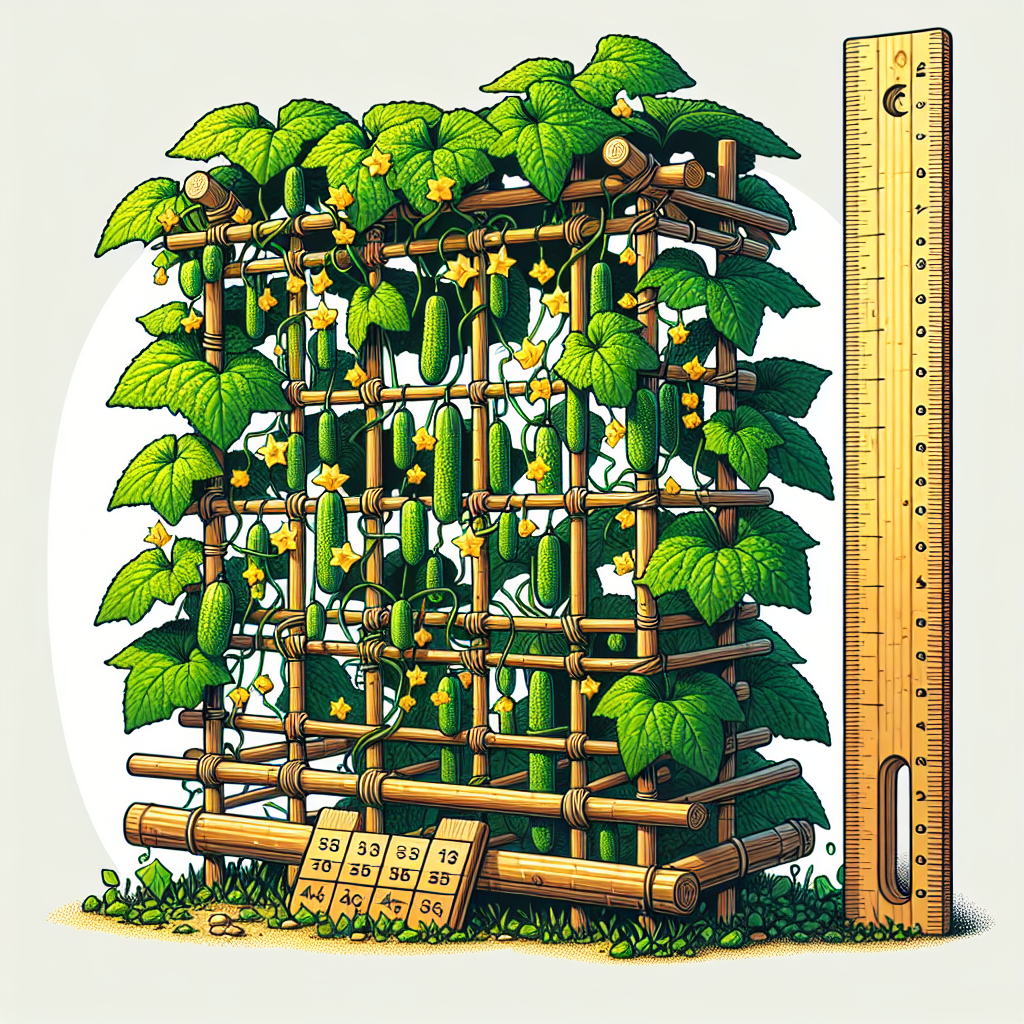
How high for cucumber trellis
The Ultimate Guide to Cucumber Trellising: How High Should Your Cucumber Trellis Be?
Cucumbers are a popular crop among home gardeners, not only because of their refreshing taste but also due to their vigorous growth and productivity. One essential aspect of growing cucumbers effectively is how to support them. A trellis can offer crucial benefits, from maximizing space to improving air circulation. But the question remains: how high for cucumber trellis? In this article, we will explore the best trellising techniques, the optimal height for a cucumber trellis, and much more.
Why Use a Trellis for Cucumbers?
Before we dive into the specifics of trellis height, it’s vital to understand why trellising is beneficial for cucumbers. Here are several reasons:
- Space-saving: Vertical growing allows you to maximize space, particularly in small gardens.
- Improved Air Circulation: Air can circulate more freely around the plants, reducing the risk of fungal diseases.
- Easier Harvesting: Elevated fruits are easier to spot and pick.
- Healthier Foliage: Less contact with soil means fewer pests and diseases affecting the leaves.
- Better Sunlight Exposure: Climbing plants can absorb more sunlight which boosts their growth.
How Tall Should Your Cucumber Trellis Be?
The height of your cucumber trellis is directly related to the type of cucumber you are growing. Generally, cucumbers can be classified into two main categories: bush and climbing varieties. Most climbing varieties, which produce long vines, require more vertical space than bush varieties. A good rule of thumb for cucumber trellises is to aim for heights of **5 to 6 feet** (1.5 to 1.8 meters) for climbing varieties.
However, if you're wondering how high for cucumber trellis specifically, consider the following:
- Standard Climbing Cucumbers: 5 to 6 feet (1.5 to 1.8 meters)
- Extra-Large Varieties: 7 to 8 feet (2.1 to 2.4 meters)
- Horizontal Trellising for Bush Cucumbers: 3 to 4 feet (0.9 to 1.2 meters)
Choosing the Right Material for Your Cucumber Trellis
The materials you choose for your trellis can impact the overall structure and its ability to support the weight of cucumber plants as they grow. Here are some common materials to consider:
- Wood: Durable and aesthetically pleasing; can be built to any height.
- Metal: Strong and long-lasting; ideal for heavy-bearing cucumber varieties.
- Plastic: Lightweight and often easier to handle; however, it may not provide the same longevity.
- Netting: Can be attached to a frame; allows cucumbers to grip while growing.
How to Build a Cucumber Trellis
Building your own cucumber trellis may seem daunting, but it's a straightforward project that can be completed with just a few tools and materials. Here’s a step-by-step guide to creating a simple cucumber trellis:
- Choose your location: Select a spot in your garden that receives at least six hours of sunlight daily.
- Gather materials: You will need wooden or metal rods, twine or netting, and garden staples or stakes.
- Set your supports: Install the vertical supports at the desired height (5 to 6 feet for climbing cucumbers).
- Attach horizontal rails: Use the rails to connect the vertical supports. Ensure they're sturdy enough to hold up the cucumber plants.
- Install netting or twine: Stretch it tightly between the supports for cucumbers to climb.
- Secure with staples: Use garden staples to keep the netting in place.
Training Your Cucumbers to Climb
Once you've constructed your trellis, training your cucumbers to climb is the next essential step. Here's how to do it:
- Initial Training: Gently guide young cucumber plants towards the trellis as they grow.
- Use Twine: If needed, tie the early vines to the trellis with soft twine to encourage upward growth.
- Twist and Wind: Encourage the plants to naturally wind around the trellis as they grow.
Common Mistakes When Trellising Cucumbers
While trellising cucumbers can be highly beneficial, several mistakes can undermine the process. Familiarize yourself with these common pitfalls:
- Inadequate Support: Always ensure that the trellis is strong enough to support the weight of the plants.
- Improper Spacing: If cucumbers are too close together, airflow can be compromised, leading to diseases.
- Neglecting Maintenance: Regularly check the condition of your trellis and make adjustments as necessary.
Maintaining Your Cucumber Trellis
To ensure your cucumbers thrive, proper maintenance of the trellis is essential. Consider these tips:
- Monitor Growth: Keep an eye on your plants as they climb, and assist them if necessary.
- Inspect for Damage: Fortify any weak spots in your trellis to prevent collapse.
- Weed Control: Ensure your growing area is free from weeds that can inhibit growth.
Conclusion: Elevate Your Cucumbers with a Trellis
Whether you are a beginner or an experienced gardener, building a cucumber trellis can transform how you grow these delicious vegetables. By following the guidelines on how high for cucumber trellis and employing the right materials, you can create a functional structure that enhances productivity and health in your garden.
Embrace the vertical growing method and enjoy an abundant harvest of fresh cucumbers. No matter your garden's size, a little creativity in trellising can make a world of difference!
By Guest, Published on October 18th, 2024